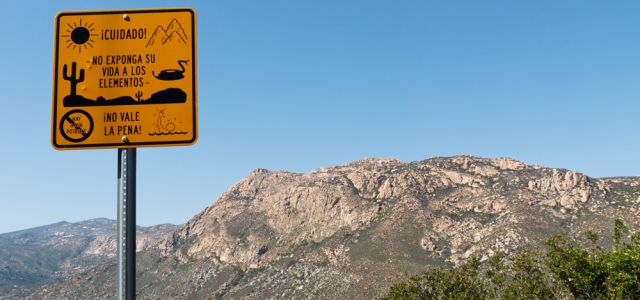 Nothing illustrates the high stakes of the immigration reform debate now taking place in the Senate quite as powerfully as the growing body count along the U.S.-Mexico border. Despite the U.S. government’s decades-long effort to stop unauthorized immigration through an “enforcement first” strategy, unauthorized migrants continue to cross the border—and scores die before completing the journey. In fact, the Tucson sector alone witnessed 2,238 migrant deaths between Fiscal Year (FY) 1990 and FY 2012. That is one of the central findings of a new report from the Binational Migration Institute at the University of Arizona, entitled A Continued Humanitarian Crisis at the Border. The report examines data from the Pima County Office of the Medical Examiner to shed light on trends in border fatalities over time, as well as the demographic characteristics of those who died.
Nothing illustrates the high stakes of the immigration reform debate now taking place in the Senate quite as powerfully as the growing body count along the U.S.-Mexico border. Despite the U.S. government’s decades-long effort to stop unauthorized immigration through an “enforcement first” strategy, unauthorized migrants continue to cross the border—and scores die before completing the journey. In fact, the Tucson sector alone witnessed 2,238 migrant deaths between Fiscal Year (FY) 1990 and FY 2012. That is one of the central findings of a new report from the Binational Migration Institute at the University of Arizona, entitled A Continued Humanitarian Crisis at the Border. The report examines data from the Pima County Office of the Medical Examiner to shed light on trends in border fatalities over time, as well as the demographic characteristics of those who died.
Fatalities in the Tucson sector have risen dramatically since 1990, coinciding with the gradual fortification of the border beginning in Texas and California. As the report notes, this had the effect of “funneling” more and more unauthorized migration through increasingly remote—and dangerous—terrain, particularly in Arizona. As a result, the number of migrant deaths in the Tucson sector rose from 8 in FY 1990 to a high of 225 in FY 2010. Despite the decline in unauthorized immigration precipitated by the economic downturn in the United States, fatalities have remained high. In FY 2012, for instance, there were 171 deaths. According to the report, fatalities have averaged about 150 per year since 2004.
The data analyzed in the report reveals some details about the deceased:
- While 66% of the deceased were identified, 34% (or 761 cases) remained unidentified. As a result, the families of these individuals can never be notified as to what became of them.
- 46% of the deceased died of exposure to the elements (“hyperthermia or hypothermia, often coupled with dehydration”), 9% from motor vehicle accidents, and 4% from homicides. Cause of death could not be determined in 36% of the cases.
- 80% of the deceased were men, 18% were women. Gender could not be determined in the remaining cases.
- The average age of the deceased was 31.
- 82.2% of the deceased were from Mexico, 7.1% from Guatemala, 2.3% from El Salvador, and 1.4% from Honduras.
The report points out that the high number of deaths in recent years “is not simply a consequence of more migrants crossing through southern Arizona.” Apprehensions by the U.S. Border Patrol are down—which is an indication that unauthorized migration has declined. The fact that fatalities are still high even though fewer migrants are coming “suggests migrants are crossing for longer periods of time through more remote areas to avoid detection by U.S. authorities, thus increasing the probability of death.”
Moreover, fatalities among unauthorized border crossers are not confined to Arizona. The report notes that “although migrant deaths and the death rate remain near all-time highs in southern Arizona, counties close to the South Texas-Tamaulipas border have begun reporting strikingly high numbers of migrant deaths.” The report advises that “scholars and policy makers alike should be concerned with this drastic increase, which is likely related to increased border enforcement efforts including deportation practices which currently repatriate a high number of deportees to areas just south of Texas”—known in Border Patrol parlance as “lateral repatriation.”
U.S. border-enforcement efforts have not put a stop to unauthorized migration; they have succeeded primarily in moving it from one place to another. In the process, our border-enforcement tactics have channeled unauthorized migrants through desert and mountain terrain that is isolated and deadly. The Senate is now considering new ways to take unauthorized immigration out of the border-security equation through immigration reform rather than just immigration enforcement. As the senators do so, they should keep in mind the slow-motion catastrophe that is taking place along the U.S.-Mexico border.
FILED UNDER: Binational Migration Institute, Border, México, Rhetoric


